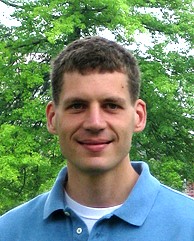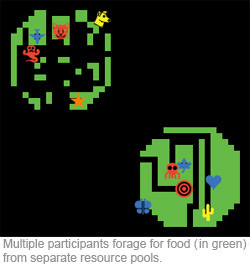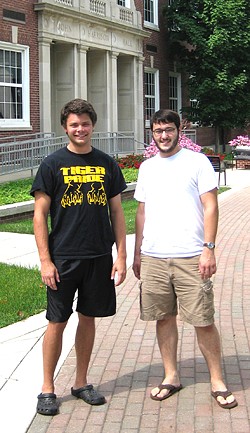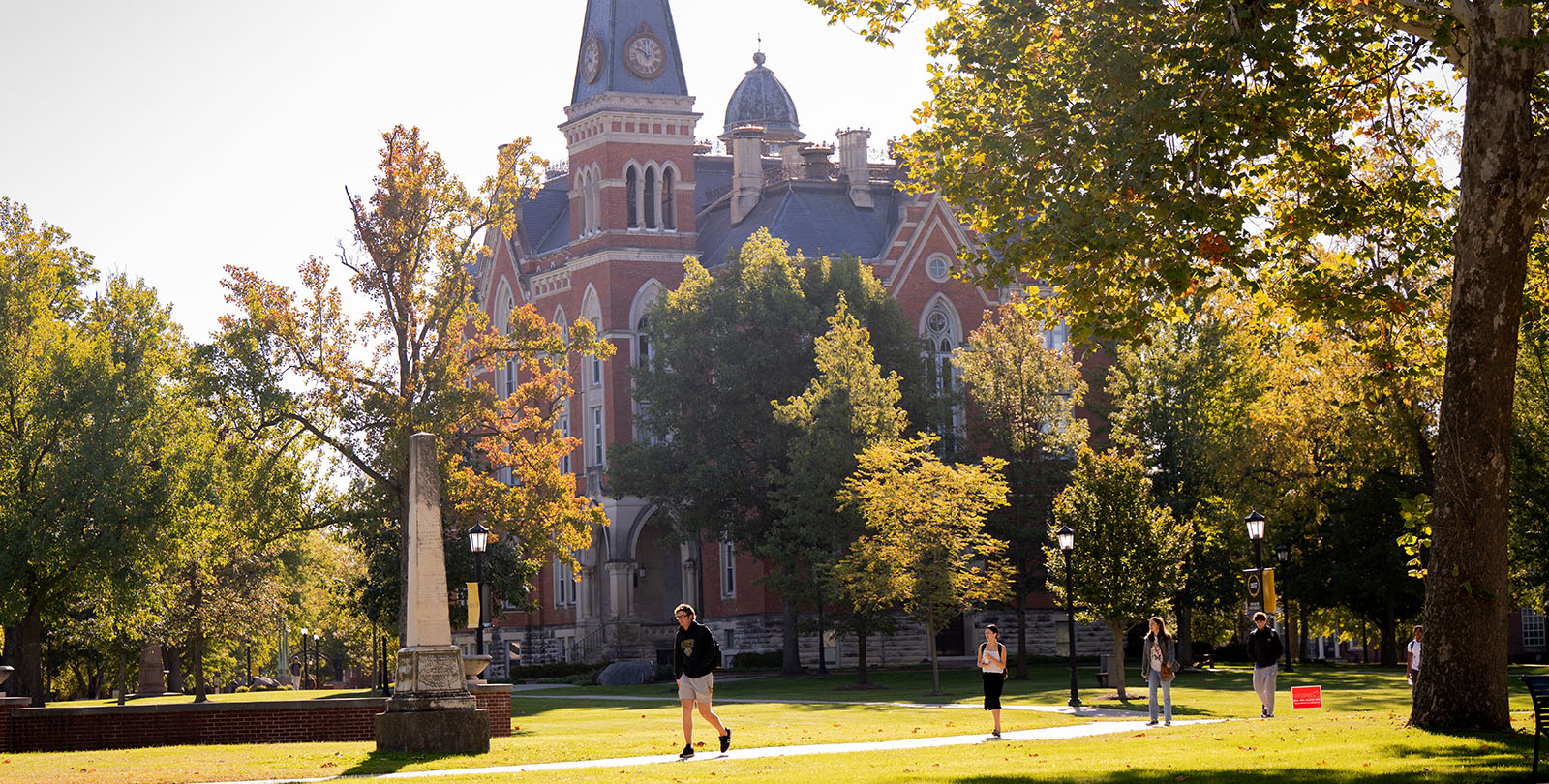News & Media
Games, Maps and the Brain
July 17, 2009
 Assistant Professor of Psychology Michael E. Roberts is spending the hot summer bunkered in Harrison Hall's basement. Not merely escaping the heat, he and two students are hard at work in his cognitive lab, shining a light on human social behavior and how the brain's biases can alter memories.
Assistant Professor of Psychology Michael E. Roberts is spending the hot summer bunkered in Harrison Hall's basement. Not merely escaping the heat, he and two students are hard at work in his cognitive lab, shining a light on human social behavior and how the brain's biases can alter memories.
Roberts and rising junior Jeffrey S. Cheesman, a biochemistry major, are conducting a social learning experiment in which participants forage for food in a networked computer simulation. A player must decide where to forage and how long to remain in that location before moving on to greener pastures.
"A lot of biology literature shows that, while you might expect there to be perfect distribution — if 70 percent of the food is in one spot, then 70 percent of the animals should be there, too — you typically find under-matching where the distribution of food and animals isn't even," Roberts says. "We've been looking at this with humans. Are human groups going to show a similar phenomenon and not quite match the resource distributions? Given that people are competing for resources, how are they being influenced by the actions of others? We want to know how social influences lead groups of people to be sub-optimal when foraging for a resource — why they are doing worse as a group than they theoretically should."
Different sets of conditions change how the participants collect food in the game, such as scenarios in which a participant can more closely observe the actions of others in order to determine where he or she will spend time foraging for food.  These conditions allow the researchers to test different factors that might affect the foragers' behavior. "We can isolate the factors that influence individuals to distribute a certain way, which helps to identify what information is affecting the overall group behavior," Roberts explains.
These conditions allow the researchers to test different factors that might affect the foragers' behavior. "We can isolate the factors that influence individuals to distribute a certain way, which helps to identify what information is affecting the overall group behavior," Roberts explains.
While foraging research has its origins in biology and studying the survival behavior of animals, Roberts and Cheesman, who also designed the software being used, are specifically interested in how humans forage for another important resource - information. Cheesman describes an example of how information gathering can present problems in academia: "Let's say a professor wants to learn something about a particular topic. The first thing the professor will do is look at any previous research done by others. Eventually, he or she will reach a point where the articles don't provide any additional information, and there is a need to conduct a new experiment to collect more information. But this presents a problem: If the professor starts independent research too early, he or she will be retreading ground that others have already examined. On the other hand, the professor might be wasting time by continuing to seek out previous studies."
 In addition to identifying the ways that social interaction affects the efficiency of an individual, Roberts and Cheesman (pictured, on left) hope that their research will help to build accurate models of human behavior in computer simulations, such as ones designed to test traffic flow within a city.
In addition to identifying the ways that social interaction affects the efficiency of an individual, Roberts and Cheesman (pictured, on left) hope that their research will help to build accurate models of human behavior in computer simulations, such as ones designed to test traffic flow within a city.
With rising junior Dillen L. Wischmeier (pictured, on right), a psychology major, Roberts is looking at how the human brain encodes and decodes information, and how information is distorted by those cognitive processes. Using maps of different locations, the researchers ask participants to take a mental trip along a specific route. Wischmeier explains that, by examining a person's sense of travel, the research will help to paint a clearer picture of what influences us to construct distorted memories and cognitive maps.
In addition to the behavioral component of the study, Roberts and Wischmeier also employ the use of an electroencephalograph (EEG) cap that can measure a participant's brain activity. The EEG cap is precise enough to measure the difference between familiarity and complete recollection — processes of memory retrieval that are handled by different parts of the brain. This allows the researchers to know how a participant prioritizes different details of his or her memory.
Although their research is focused on describing the way the human brain functions, Roberts says that their findings could be applied to cartography by scaling parts of the map to deal with the biases of the human brain.
"We understand our surroundings concretely," Wischmeier says. "If you had somebody draw a map, he or she would probably be convinced that the map was pretty close to the real thing. However, we find over and over again that people distort the same types of details. It's interesting to what extent the mind simplifies information. For example, it's not important what the angle of a road intersection is, but that there is an intersection. I feel like it's a matter of condensation. We all have this information in our heads, but, because we don't need all of it, we string the important bits and pieces together."
"A large part of why I'm interested in psychology goes back to the fact that we inadvertently distort parts of our lives," Wischmeier adds. "We construct our world based on things that make sense to us, but we also block out and distort things about ourselves, whether they're maps or our life stories."
Contact Us
Communications & Marketing

Bob Weaver
Senior Director of Communications
- bobweaver@depauw.edu
- (765) 658-4286
-
201 E. Seminary St.
Greencastle, IN 46135